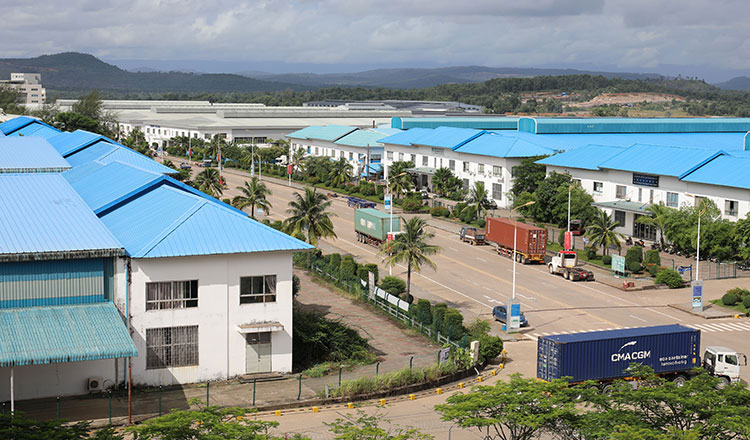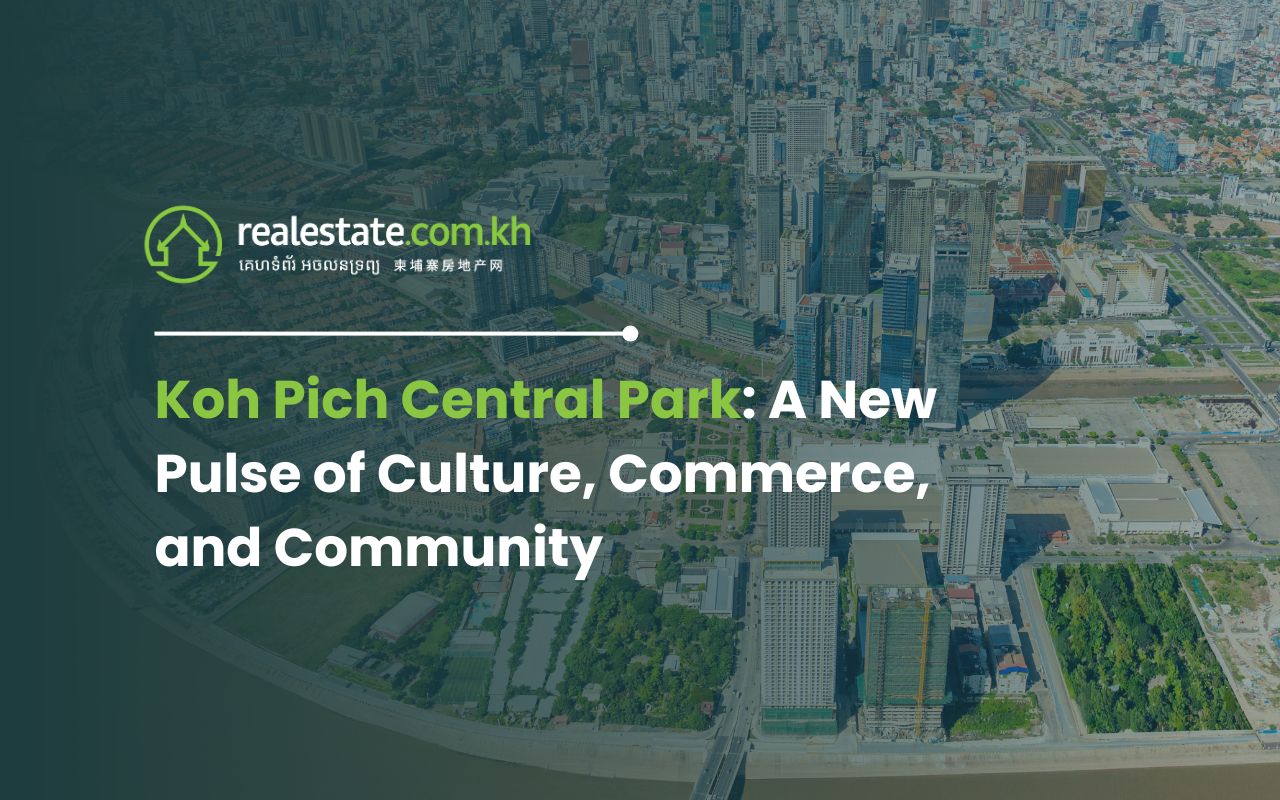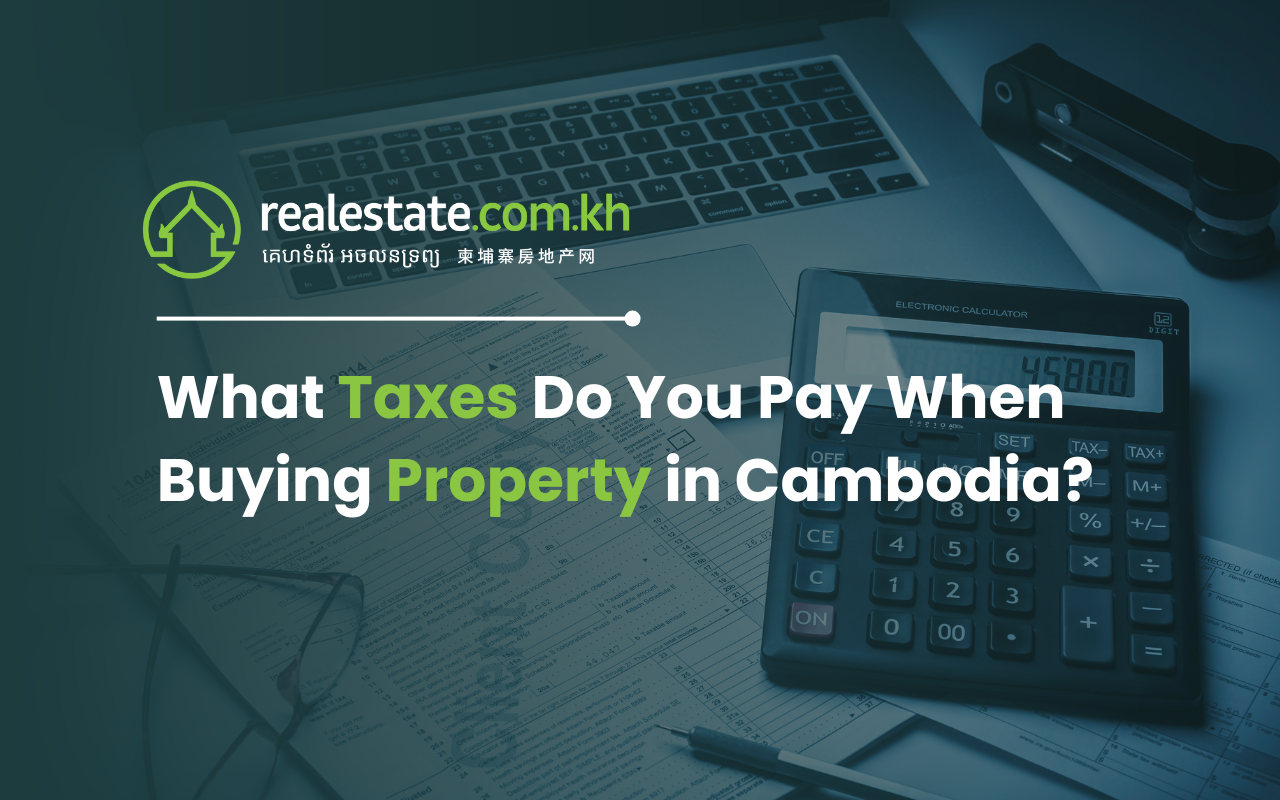Cambodia's real estate market is experiencing a dynamic and evolving shift, and real estate prices have generally stabilised, depending on the region and property type.
Phnom Penh continues to attract investment in commercial and high-end residential properties, and the jury is out for Sihanoukville since the announcements on attracting investments to help continue to transform the region.
The long-term outlook for Cambodia is generally positive, considering the ongoing urbanisation, economic development, and evolving demographic trends. According to Statista.com - Cambodia's real estate market is projected to grow by 1.56 per cent from 2024 to 2028, resulting in a market volume of USD $639.50 billion in 2028.
Ross Wheble, the Country Head for Knight Frank Cambodia, adds his thoughts on the state of commercial real estate in Cambodia and what potential opportunities are within this subsector.
Wheble has been based in the Kingdom for a decade and worked closely with both public and private sector stakeholders to help shape the real estate sector in Cambodia and help improve industry standards and best practices in the industry.
What Are The Current Trends In The Cambodian Commercial Real Estate Market?
The main types of commercial real estate are; office buildings, retail real estate, industrial, factories and warehouses, hotels, as well as commercial land.
“Generally in Phnom Penh, we are now entering an oversupply scenario across all sectors, including office, retail, and hospitality, and it will take some years for the existing supply to be absorbed into the market. This has placed downward pressure on occupancy rates, rents and hotel room rates,” said Wheble.
According to the Cambodian Ministry of Land Management, Urban Planning, and Construction (MLMUPC), the total investment capital in real estate and construction projects fell between 2020-2022 with all real estate sub-sectors impacted; residential, industrial, and commercial.
The latest data from MLMUPC for the first 11 months of 2023 painted a more optimistic picture, with USD $5.255 billion worth of investment. The total area under development (12.69 million sqm), and total investment values were a stark increase compared to 2022.
The National Bank of Cambodia reported the growth of construction in Cambodia at 1.1 per cent in 2023 and 0.5 per cent in 2022, while the real estate sector saw 0.5 per cent growth last year - a slight improvement on the 0.2 per cent in 2022. Those are low growth numbers but are still heading in a positive trajectory.

How Does Cambodian Commercial Real Estate In Cambodia Compare To ASEAN Peers?
Wheble commented, “The Cambodian market is still very much in its infancy, with slow demand growth for both office and retail space due to limited companies/brands/retailers entering the market. However, this also represents an opportunity for Cambodia to leapfrog neighbouring countries in terms of new concepts, technology, standards and practices that can be introduced to the Kingdom.”
New regulations could be coming to help elevate building practices, while technology and conceptualisation is better being utilised in newer developments that have been announced.
Looking at some neighbouring country’s commercial property markets, there are challenges being faced in most countries:
Thailand - The Thai property market also didn't quite see the recovery that was expected in 2023 but it has been political uncertainty that has stalled some of the recovery. The concerns about a global economic slowdown and stricter loan criteria for properties are the concerns.
The residential sector is the largest in Thailand, accounting for two-thirds of the total market value of its real estate market. As in Cambodia and other markets, commercial real estate has a long way to go.
Vietnam - Cambodia’s neighbour also saw a downturn in its property market (reports suggest that between 2022-23, the number of real estate transactions fell by as much as 90 per cent) but it is anticipated there will be a rebound in the latter half of 2024. New laws have also been passed in addition to the government policies to support the sector which are hoped to boost their market. Major cities such as Hanoi and Ho Chi Minh City have also seen a recent proliferation of new commercial real estate leading to perceived oversupply.
Cambodian Urbanisation

This growth in the country’s economy has positively influenced the real estate market, with an increased demand for both mid-range and high-end properties due to the middle class's expansion. This knock-on effect means there is increased demand for better standard housing and the urban centres continue to be attractive to the younger and generally better educated population.
On whether urbanisation is creating a positive impact on commercial real estate, Wheble added, “Yes, of course. An increasing population size within Cambodia's key cities will drive demand for commercial space, however, this is a long-term process as many residents coming from the provinces have a low disposable income.”
According to the World Bank, Cambodia's urban population was approximately one-quarter of the population in 2020, and it is expected to reach 44 per cent by 2030. The government still has ambitious aims to transform Cambodia into an upper-middle-income nation by 2030 and a high-income country by 2050.
Cambodia saw urban population growth of 3.07 per cent in 2024 (4,58 million people), with a 3.29 per cent annual growth rate for the past 10 years.
Cambodian Prime Minister Hun Manet said in February 2024 that the government will continue to “future-proof Phnom Penh’s infrastructure so it can match the developmental needs of its growing population.”
Cambodian Real Estate Sector Challenges
The real estate market in Cambodia is undergoing its biggest challenges in decades and there has been a slowdown in sales of some property types as well as issues in oversupply.
There have been compounding factors that have contributed to this - with post-pandemic lag, the Chinese property market worries, global economic financial concerns, and geopolitical issues.
On whether the challenges faced by the Cambodian residential real estate sector have trickled down into the commercial real estate space, the Country Head for Knight Frank Cambodia said; “As I mentioned earlier, we have now entered an oversupply scenario across all sectors in Phnom Penh, similar to that of the residential sector. This has led to falling prices and occupancy rates. On the upside, this represents a great opportunity for buyers and tenants to secure competitive prices for commercial real estate.”
On the sector in the long run, he has said recently that there is no doubt that the future of Cambodia is bright, with abundant business opportunities across wide-ranging sectors.




Comments